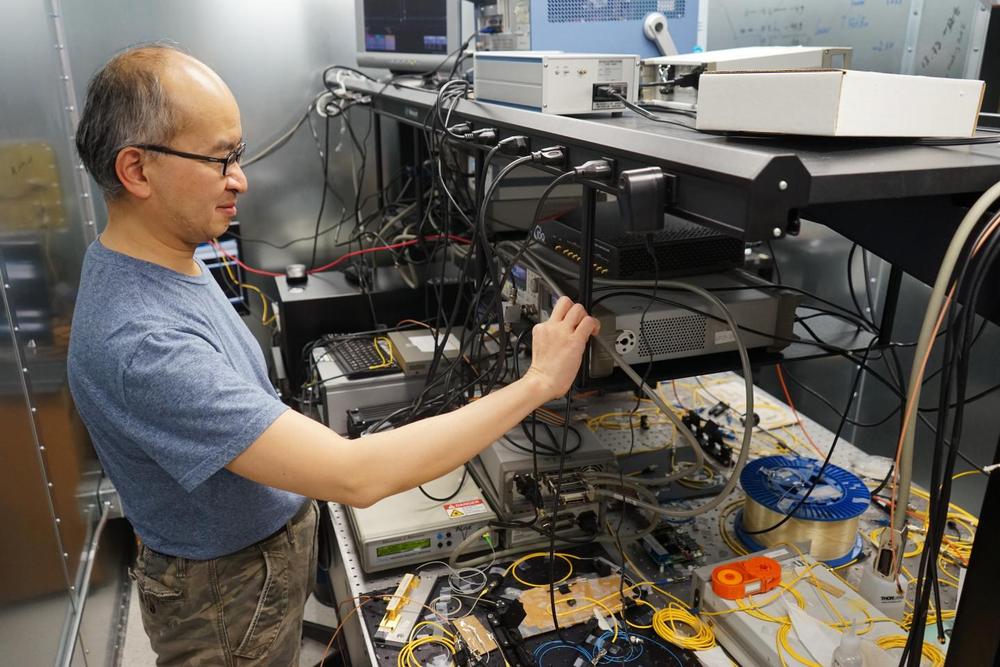Archive for the ‘cybercrime/malcode’ category: Page 176
May 1, 2019
Team develops system to legally test GPS spoofing vulnerabilities in automated vehicles
Posted by Quinn Sena in categories: cybercrime/malcode, law, mobile phones, robotics/AI, satellites
Southwest Research Institute has developed a cyber security system to test for vulnerabilities in automated vehicles and other technologies that use GPS receivers for positioning, navigation and timing.
“This is a legal way for us to improve the cyber resilience of autonomous vehicles by demonstrating a transmission of spoofed or manipulated GPS signals to allow for analysis of system responses,” said Victor Murray, head of SwRI’s Cyber Physical Systems Group in the Intelligent Systems Division.
GPS spoofing is a malicious attack that broadcasts incorrect signals to deceive GPS receivers, while GPS manipulation modifies a real GPS signal. GPS satellites orbiting the Earth pinpoint physical locations of GPS receivers embedded in everything from smartphones to ground vehicles and aircraft. SwRI designed the new tool to meet United States federal regulations. Testing for GPS vulnerabilities in a mobile environment had previously been difficult because federal law prohibits over-the-air re-transmission of GPS signals without prior authorization.

This video unpacks my creative process, it distills the way I hack my creativity by following my bliss… it explores the relationship between mood and creativity as well as the link between landscapes that surround us and the states of mind they give rise to…
May 1, 2019
Storage beyond the cloud
Posted by Mike Ruban in categories: biotech/medical, cybercrime/malcode, habitats, internet, space
A new way to store information in molecules could preserve the contents of the New York Public Library in a teaspoon of protein, without energy, for millions of years.
Books can burn. Computers get hacked. DVDs degrade. Technologies to store information–ink on paper, computers, CDs and DVDs, and even DNA–continue to improve. And yet, threats as simple as water and as complex as cyber-attacks can still corrupt our records.
As the data boom continues to boom, more and more information gets filed in less and less space. Even the cloud–whose name promises opaque, endless space–will eventually run out of space, can’t thwart all hackers, and gobbles up energy. Now, a new way to store information could stably house data for millions of years, lives outside the hackable internet, and, once written, uses no energy. All you need is a chemist, some cheap molecules, and your precious information.
Apr 29, 2019
Will Artificial Intelligence Enhance or Hack Humanity?
Posted by Derick Lee in categories: cybercrime/malcode, robotics/AI

THIS WEEK, I interviewed Yuval Noah Harari, the author of three best-selling books about the history and future of our species, and Fei-Fei Li, one of the pioneers in the field of artificial intelligence. The event was hosted by the Stanford Center for Ethics and Society, the Stanford Institute for Human-Centered Artificial Intelligence, and the Stanford Humanities Center. A transcript of the event follows, and a video is posted below.
Historian Yuval Noah Harari and computer scientist Fei-Fei Li discuss the promise and perils of the transformative technology with WIRED editor in chief Nicholas Thompson.
Continue reading “Will Artificial Intelligence Enhance or Hack Humanity?” »
Apr 25, 2019
New technique uses power anomalies to ID malware in embedded systems
Posted by Saúl Morales Rodriguéz in categories: cybercrime/malcode, internet, mobile phones, robotics/AI
Researchers from North Carolina State University and the University of Texas at Austin have developed a technique for detecting types of malware that use a system’s architecture to thwart traditional security measures. The new detection approach works by tracking power fluctuations in embedded systems.
“Embedded systems are basically any computer that doesn’t have a physical keyboard – from smartphones to Internet of Things devices,” says Aydin Aysu, co-author of a paper on the work and an assistant professor of electrical and computer engineering at NC State. “Embedded systems are used in everything from the voice-activated virtual assistants in our homes to industrial control systems like those used in power plants. And malware that targets those systems can be used to seize control of these systems or to steal information.”
At issue are so-called micro-architectural attacks. This form of malware makes use of a system’s architectural design, effectively hijacking the hardware in a way that gives outside users control of the system and access to its data. Spectre and Meltdown are high-profile examples of micro-architectural malware.
Continue reading “New technique uses power anomalies to ID malware in embedded systems” »
Apr 18, 2019
The quantum internet comes closer
Posted by Quinn Sena in categories: cybercrime/malcode, internet, quantum physics
The goal of a worldwide “quantum internet” could be one step closer thanks to new experiments by researchers in Japan and Canada who have made the first ever quantum repeaters that work using an all-photonic protocol. The scheme importantly allows for the time-reversed adaptive Bell measurement, which is a key component for all-photonic quantum repeaters. It is based on optical devices alone and does not require any quantum memories or quantum error correction.
The Internet as we know it was not designed to be secure, and hacking, break-ins and espionage are unfortunately par for the course today. A quantum internet would be much more secure – as well as being much faster – since it exploits key features of quantum physics such as quantum entanglement.
Entanglement and quantum memories.
Apr 8, 2019
QC — Cracking RSA with Shor’s Algorithm
Posted by Quinn Sena in categories: cybercrime/malcode, encryption, information science
With new advances in technology it all comes down to simple factoring. Classical factoring systems are outdated where some problems would take 80 billion years to solve but with new technologies such as the dwave 2 it can bring us up to speed to do the same problems in about 2 seconds. Shores algorithm shows us also we can hack anything with it simply would need the technology and code simple enough and strong enough. Basically with new infrastructure we can do like jason…
RSA is the standard cryptographic algorithm on the Internet. The method is publicly known but extremely hard to crack. It uses two keys for encryption. The public key is open and the client uses it to encrypt a random session key. Anyone intercepts the encrypted key must use the second key, the private key, to decrypt it. Otherwise, it is just garbage. Once the session key is decrypted, the server uses it to encrypt and decrypt further messages with a faster algorithm. So, as long as we keep the private key safe, the communication will be secure.
RSA encryption is based on a simple idea: prime factorization. Multiplying two prime numbers is pretty simple, but it is hard to factorize its result. For example, what are the factors for 507,906,452,803? Answer: 566,557 × 896,479.
Continue reading “QC — Cracking RSA with Shor’s Algorithm” »
Apr 7, 2019
Photons Over ‘Optical Fiber Obstacle Course’ Could Improve Cyber Security
Posted by Genevieve Klien in categories: business, cybercrime/malcode, quantum physics

The new approach supports the development of quantum key distribution, a technology both businesses, and governments are very excited about.
Apr 1, 2019
Acknowledging Risks in Institutional “Stablecoin” Cryptocurrencies and Fractional Reserve Banking
Posted by Samson Williams in categories: bitcoin, business, cybercrime/malcode

(Originally posted March 7, 2019, on the Crowdfunding Professional Association’s website.)
The purpose of this memo is two-fold:
- To highlight the possibility of risks to banking and finance sectors arising from new financial instruments based on blockchain technology; primarily from novel financial accounting methods and products called “stablecoins,” digital tokens, and cryptocurrencies.
- To encourage regulators and policymakers to engage blockchain thought leaders, product developers and the community in general to better understand the economic and policy implications of public, private and permissioned blockchains; their application to banking and finance regulations; and how innovation may be encouraged in a safe, sound and responsible manner.
Like any technology, blockchain can and may be used to improve a variety of operational, identity, security and technology challenges that the future of digital banking, business and society face. Blockchain technology is also poised to create new and increasingly clever methods and economies for value, commodities, assets, securities and a slew of yet-to-be discovered financial instruments and products. However, no leap in technology and finance is ever made without risk. As policymakers and stewards of the current and future digital economy and ecosystem, we have an obligation to our constituents and the global banking and finance community to guide the growth and adoption of emerging fintech technology in a safe and sound manner.
To that end, three areas that have the potential for regulatory and compliance issues as companies such as JP Morgan Chase, embrace and develop blockchain technologies to leverage digital tokens, cryptocurrencies and novel accounting systems such as the so called “JPMCoin,” are highlighted:
Tags: bitcoin, blockchain, cryptocurrency, stablecoins













